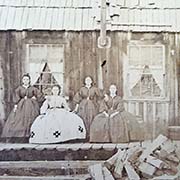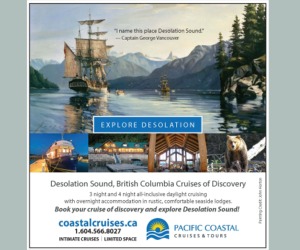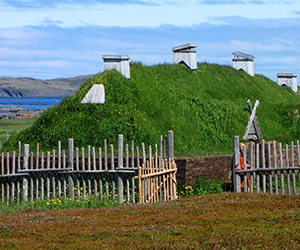CANADA HISTORY
Barkerville

The Barkerville Gold Rush stands as one of the great frenzied events in North American history, rivaling the more famous California and Klondike rushes. In the mid-19th century, the promise of gold drew thousands of people from around the world to remote and often treacherous corners of the continent, seeking a fortune that only a few would ever realize. The 1849 California Gold Rush had already set the tone for these mass migrations, luring prospectors with dreams of easy riches. Yet, as with all gold rushes, the reality was far harsher—while a handful of individuals did strike it rich, the majority found little more than disappointment, eking out a meager existence or giving up entirely. However, the feverish pursuit of wealth never fully subsided, and when the initial boom faded, many hardened prospectors continued their search, moving further into unexplored territories in the hope of uncovering new fortunes.
By the 1850s, this quest for gold had brought a moderate rush along the Fraser River in what would later become British Columbia. Americans, British, Chinese, and many others sifted through the river’s gravel bars for a few precious specks of gold. At this time, Governor James Douglas saw the need to manage this growing influx and protect British interests, prompting him to initiate the construction of a road system into the area. In 1858, British Columbia was officially declared a Crown Colony, a crucial step in the region’s development. This infrastructure, combined with rumors of richer discoveries further inland, set the stage for the next major chapter in the province's history.
The real spark for the Barkerville Gold Rush came in 1861, when prospectors along the Fraser River began hearing rumors of a significant gold discovery along the Williams Creek, deep in the northern interior of British Columbia. One of these prospectors was Billy Barker, an experienced but unsuccessful miner who had worked in both California and along the Fraser. When he arrived at a small spot in Stout’s Gulch on the Williams River, Barker decided to dig a shaft straight down—a bold and risky move that would soon make history. At a depth of around 50 feet, Barker struck a rich vein of gold, extracting over $500,000 worth during his time there, a fortune by any measure of the day. The news spread rapidly, igniting a stampede of fortune-seekers from all corners of North America, with a particularly large contingent coming from the United States.
Barkerville itself quickly grew into a bustling town of 10,000 people, most of whom were not miners but individuals catering to the needs of those who sought their fortune—store owners, saloon keepers, blacksmiths, and entertainers. The rush of American settlers and fortune seekers into the area alarmed Governor Douglas, who feared that without the presence of law and order, the British claim to the region could be undermined. He responded by formally extending British protection to the mainland colony and dispatching troops and constables to impose order. This was a crucial moment in the consolidation of British Columbia as a British colony, and the rush prompted significant administrative changes. In 1866, the colonies of Vancouver Island and British Columbia were united to save on costs and streamline governance, with Victoria designated as the capital, setting the stage for British Columbia’s eventual entry into Canadian Confederation in 1871.
Though the gold rush itself was relatively short-lived, peaking between 1862 and 1865, its impact was far-reaching. Barkerville became a symbol of the era, but as the gold ran out, the town’s population began to dwindle. By 1868, a devastating fire destroyed much of the town, and although the residents began rebuilding almost immediately, the decline had already set in. By the turn of the century, Barkerville had shrunk to a shadow of its former self, with only a few hundred people still calling it home.
The Barkerville Gold Rush was not just about the search for gold; it was a transformative event in the development of British Columbia. It accelerated the consolidation of the region under British control, spurred infrastructure development, and ultimately laid the foundation for British Columbia’s inclusion as a province in Canada. The rush brought diverse populations together, fostered trade, and underscored the importance of establishing law and order in the remote wilderness of the Pacific Northwest. Today, Barkerville remains a well-preserved heritage site, a testament to the human drive for discovery and the lasting impact of those fevered years on Canadian history.
Cite Article : www.canadahistory.com/sections/documents




